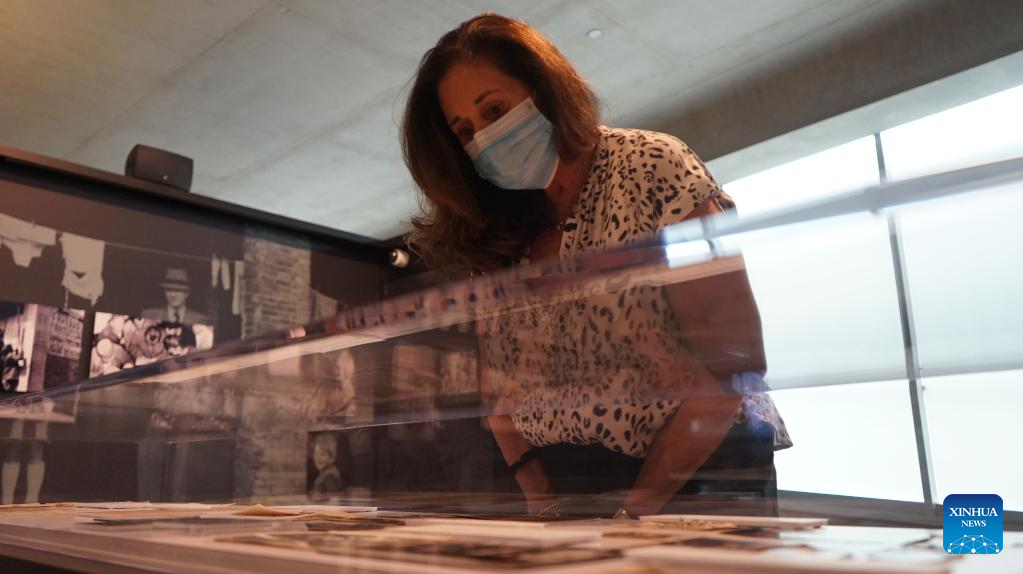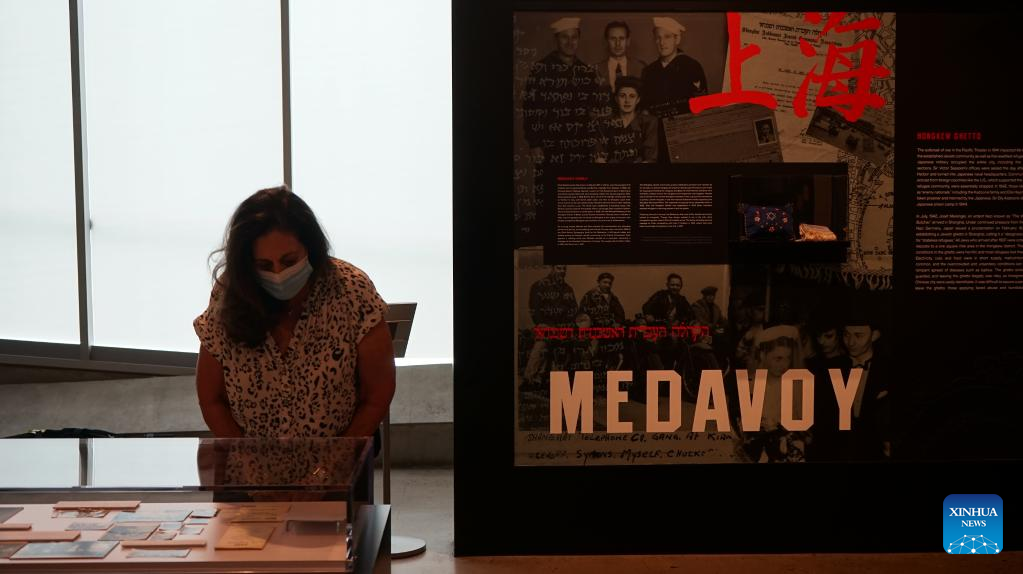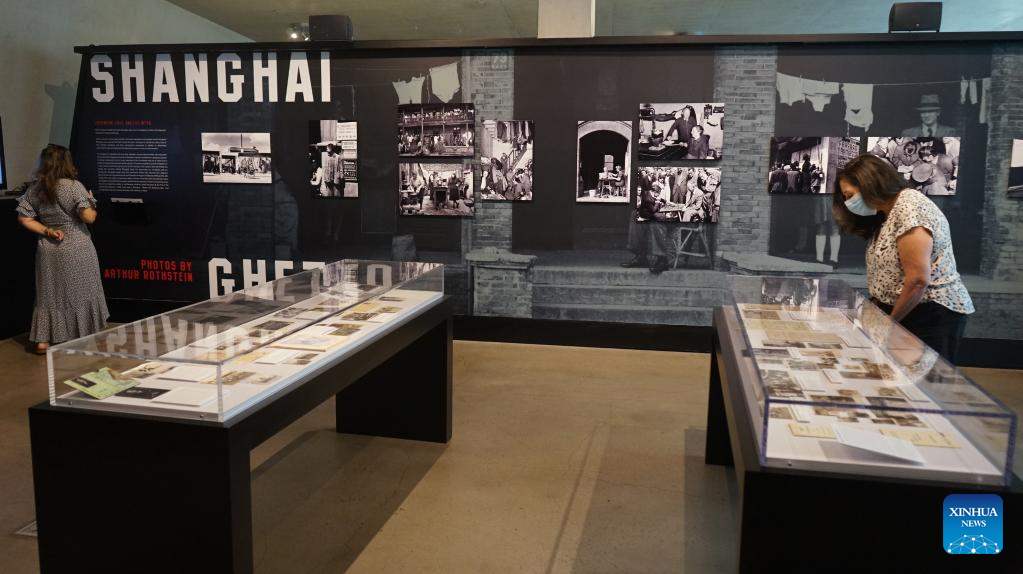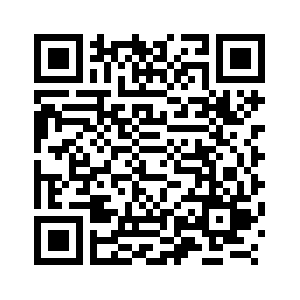
A woman visits an exhibition titled "Hidden History: Recounting the Shanghai Jewish Story" at Holocaust Museum LA in Los Angeles, California, the United States, on Aug. 4, 2022. (Photo by Zeng Hui/Xinhua)
by Julia Pierrepont III, Zeng Hui
LOS ANGELES, Aug. 22 (Xinhua) -- "Hidden History: Recounting the Shanghai Jewish Story," on view through this weekend, is a must-see exhibit at Los Angeles' Holocaust Museum that focuses on a virtually unknown chapter in Shanghai's storied history and the Jewish diaspora.
The exhibit, started from April, explores the history of Jews in China, Jordanna Gessler, vice president of education and exhibits at the museum, told Xinhua in a recent interview, explaining how "Shanghai became an unlikely refuge for 20,000 Jewish refugees" who were able to found a safe haven in China, particularly during the perilous 1930s and 1940s when the Nazi regime was bent on their annihilation.
"We felt this was a part of history that needed to be uncovered, discussed and told," Gessler said. "Especially thinking about the history of the holocaust and it's important lessons and social relevance of today where we still see identity-based violence and refugee crises around the world."
The museum website describes their never-before-seen exhibition as "explores this multifaceted history of desperation, loss, and asylum through survivor stories and the photographic lens of prominent American photojournalist Arthur Rothstein, who documented the Shanghai Jewish community in 1946 for the United Nations."
With most countries limiting or denying entry to Jews during the 1930s, the free port of Shanghai became an unexpected safe haven for Jews attempting to flee the antisemitic policies and identity-based violence in Nazi-controlled Europe. By the 1930s, Shanghai, the hub of China's international trade, was then the fourth largest city in the world. What began as a trickle of approximately 1,500 Jewish refugees from Europe soon developed into a flood, with numbers jumping to 17,000 by the end of 1938, according to the exhibit.
The exhibit honors this shared moment in history with emotionally gripping stories of survival and compelling displays of unique personal items of Shanghai's Jewish refugees - some well off and others penniless with only the shirts on their backs. Items include silver samovars, porcelain tea sets, delicate lace, illuminated texts, exquisite porcelain dolls, spectacles, prayer shawls and Tanakhs and other religious relics - in short, all the paraphernalia and memorabilia of private lives.
Passports, visas, military ID's, other identification papers are also on display beside other documents that tell the tale of refugees forced from their homes to one of the only free ports in the world that would accept them.
Touching photographs of friends, families and classmates provide an emotional glimpse into a people given refuge at a key time in history. One shows a Jewish couple making soup on Chinese cook stoves, another shows 10 refugees crammed into a rough dwelling hung with washing-lines, while another shows young Jewish residents enjoying a day on a sandy beach in Harbin, northeast China, prior to the Japanese invasion.
"It's important for me to teach the young generation about the Holocaust," says a prominent quote on the wall, by Jona Goldrich, Nazi concentration camp survivor and co-founder of the LA Holocaust Museum. "The world wants us to forget the biggest horror mankind ever created, the murder of six million Jews by a country that was, at the time considered the most cultured and enlightened in the world. I am fighting against forgetting."
After the Japanese invasion into Manchuria and Shanghai, Japanese occupation forces bowed to pressure from their Nazi allies and rounded up Shanghai's Jews, forcing then into unsanitary, overcrowded slums.
"Living conditions in the ghetto were horrific; electricity, coal, and food were rationed and in short supply, malnutrition was common, and the overcrowded and unsanitary conditions led to rampant diseases like typhus," explains the exhibit literature.
"Despite different languages and traditions, the desperate circumstances and unknown fate of the refugees united them, and they formed kinship, working together to maintain human dignity," the exhibit said.
Some Shanghai refugee alumni went on to be important figures, like Michael Medavoy, now a prominent Hollywood producer, who made it to the United States.
The items on display were mainly from the Holocaust Museum's own collection, while others were from the Skirball Cultural Center, Israel's Yad Vashem and the Arolsen Archives in Germany and from private individuals like Medavoy.
Many of the photographs that documented the lives of Jewish refugees in Shanghai were taken by Jewish American documentary photographer Arthur Rothstein during his visit to Shanghai as part of a UN mission.
"His photo essay provides a window into the lives of refugees who found tolerance and a temporary home during the turbulent years of World War II," explained exhibit curators. ■

A woman visits an exhibition titled "Hidden History: Recounting the Shanghai Jewish Story" at Holocaust Museum LA in Los Angeles, California, the United States, on Aug. 4, 2022. (Photo by Zeng Hui/Xinhua)

People visit an exhibition titled "Hidden History: Recounting the Shanghai Jewish Story" at Holocaust Museum LA in Los Angeles, California, the United States, on Aug. 4, 2022. (Photo by Zeng Hui/Xinhua)



